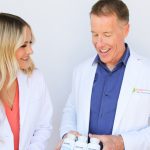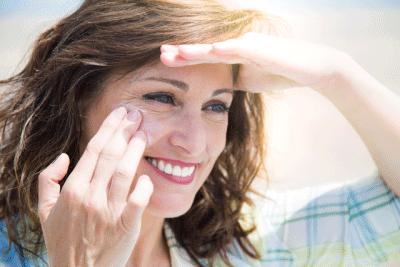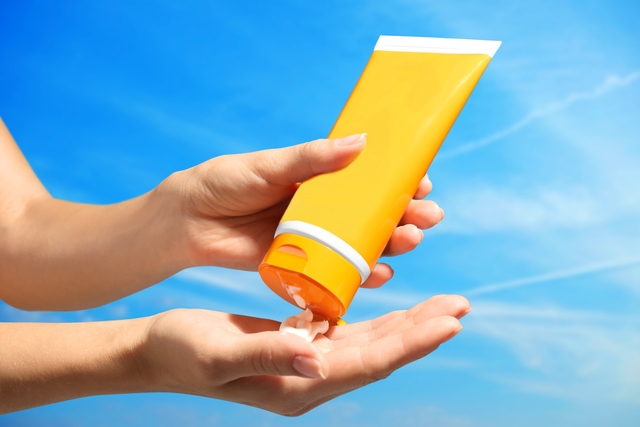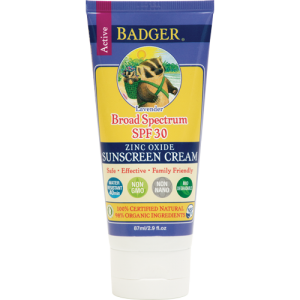The summer has arrived! How much do you know about the stuff you are putting on your skin? Would you believe that zinc and vitamin A can actually be dangerous in sunscreens? I want you to learn more information about how you can keep your family safe today. Which is why we are diving into the world of sunblock for your health.
- Have any questions?
- 480-631-7837
- support@in-goodhealth.com

Why Did I Get Thyroid Disease (and How Can I Prevent It)?
December 12, 2023
Should You Ignore Your TSH?
December 15, 2023
Why Did I Get Thyroid Disease (and How Can I Prevent It)?
December 12, 2023
Should You Ignore Your TSH?
December 15, 2023Home > Hormone Reset > The 6 Chemicals You Need To Avoid In Your Sunscreen
The 6 Chemicals You Need To Avoid In Your Sunscreen

The Role of Sunscreen and Sunblock
Warmer weather often means more sun, and that typically means more sunscreen and sunblock. Did you know that there has not been any documented benefits of sunscreens in cutting down on certain skin cancers?
Key Insight: Sunscreens are known to decrease burns, but the research on their effect on preventing melanoma is not nearly as positive. We do not know how much they actually protect you against any long-term issues.
That is why I want you to think of sunscreen not as a mainstay, but as a backup. Living in the Sonora Desert, my family and I know the dangers of too much sun. We all have very fair skin, and we tend to burn a lot more than we tend to tan. For us, and for most, it is not about throwing on some sunscreen and just heading out the door. You want backups, such as:
- Hats (the bigger the brim, the better)
- Shirts with collars
- A bandana around the neck
- Pants
- Long sleeve shirts
Bottom Line: You either want to be in the shade or make some shade on your own with your outfit choices. You might think that longer sleeves and pants are actually going to make you hotter. But, when they are well ventilated they are essentially shading your body and keeping you cool. Lessening the heat of the sun directly on your skin.
Eye Protection
We all know how important our eyes are. The long-term health of our eyes is absolutely essential because we do so much with them. That is why eye protection is something we really need to focus on when it comes to the sun.
Your excessive exposure to sunlight is a large factor correlating with macular degeneration later on in life. This is especially true for those with lighter colored eyes, like blue or hazel.1
Key Insight: The better sunglasses for your eyes will have UVA and UVB protective lenses. Do not go for a pair that does not have one of these designations. They will not be able to help your eyes and keep them from the sun.
Chemicals In Sunscreen

There are actually a lot of chemicals that we want to avoid in sunscreens. I want to run through some of the most important ones, so get ready for what might be a bit of a surprise:
Vitamin A
This is a big surprise for some. It turns out that when vitamin A is on your skin and interacting with light. It ultimately becomes harmful to your skin.
Oxybenzone
This is a big one to avoid. Both it and octinoxate are clear endocrine disruptors. They are both things which mess with our hormones. Which means that they can cause worse hormonal symptoms, more thyroid problems, or raise the risk for more hormonal cancers (breast or prostate).
Titanium Dioxide
The data has shown that titanium dioxide can cause DNA damage.2
Nanoparticles of Zinc Oxide
These actually cause free radical damage on the skin, but we will get back to zinc oxide later on in this article.
Other Ingredients To Avoid
We also want to avoid both parabens and BHA in our sunscreen.
The Best Ingredient In Sunscreen

Your best ingredient, by far, is zinc in sunscreens. While avoiding those nasty nanoparticles that I mentioned early. The better compounds actually use clear versions of zinc.
Think of those old timey cartoons of lifeguards, where they have that classic white strip of sunscreen right on the bridge of their nose. This is the safe version of zinc that we are talking about, but it is obviously difficult to have that over your entire body. That is why we want to seek our clear versions of zinc in our sunscreen.
Bottom Line: Zinc actually acts as a block, and not just a screen. While we do not know for sure that this helps us, due to the role of ultraviolet light potentially bypassing the surface, it still remains as a study backup.
Creams or Sprays?
This is another important distinction between a sunscreen that is going to be effective and one that can be potentially harmful. Sprays are handy, but the drawback is that you are actually going to inhale some of what is in the bottle. These have, unfortunately, not been thoroughly researched into their effects on mucous membranes (like your lungs and your sinuses).
Bottom Line: You always get it in your mouth. It always tastes terrible, and it actually does a poor job of covering our entire body. Creams are better because we have better control over them overall (both what they can do to our body, and in our application of them).
When we talk about creams, we often hear the term sun protection factor (or SPF). Most experts have actually argued that numbers above 50 are simply silly and completely made up.
Legitimate companies actually max out their SPF at around 30 – 50, so if you see companies claiming to have their SPF at around 70 – 100 it is just not meaningful in any way.

Bottom Line: When it comes to SPF, think about 30 – 50 while keeping in mind that they need to be reapplied on a frequent basis (especially when you are in water).
The Role of Vitamin D
The other thought that some might have is how important vitamin D is in our lives (Read: Why would I be low in Vitamin D). And, how sunblock or sunscreen might be getting in the way of our vitamin D formation. We know how important vitamin D is to our health, but where do we actually get it from and how can we get more of it in our lives?
The thing about vitamin D is that the sun is not our only source, we can also get it from:
- Foods, and
- Supplementation
Key Insight: Even with sun exposure, vitamin D levels can often be low in our bodies. So getting out in the sun is not a consistent practice, because it does not guarantee high levels of vitamin D.
If you had complete blockage of the sun, at all times, yes you would have lower levels of vitamin D than you would have otherwise. But, the fairer your complexion is, the quicker you are able to absorb vitamin D from sunlight. The darker your skin is, though, the longer it takes.
You can have some exposure to vitamin D earlier in the day, or later in the day, and apart from the sun actually entering you, there are good effects that it has on your body’s circadian cycles.
When your eyes actually recognize that it is morning, because of the light from the sun you are receiving, it sets in motion the process whereby your body knows to also get tired in the evening to try and guarantee you a good night’s sleep.
Bottom Line: You do not have to be out bronzing first thing in the morning to reap the benefits of the sun – you simply have to be outdoors! Heading outside, without sunglasses, for some morning sun can do a lot of good for your body outside of the effects of vitamin D.
My Favourite Brand of Sunblock

After all that we have covered today, you might be wondering about my favorite brand out there on the market for sunblock.
Personally, I love the Badger brand sun lotions.3 They are made from clear zinc oxide, with no nanoparticles, and they do not have additives, synthetics, or preservatives in them at all.
Bottom Line: While I definitely enjoy using the Badger brand as a sun lotion, I do want to emphasize the fact that lotions like these should be viewed primarily as a backup to clothing. Shade your skin, and you will feel the cooling effects and the sun blockage that your body needs. This is definitely priority number one for our health.
Your Health, This Summer

The summer is finally here, and even though it feels like summer a lot of the time in the Sonora desert, I know that there are people far and wide who are concerned about their health.
That is why it is so important that you take a moment to take the Thyroid Quiz (Click Here) today.
Learn more about the state of your health, and make this the summer where change is possible. Do not just think about doing what is best for your summer, but your entire body, too.
1 – https://www.ncbi.nlm.nih.gov/pmc/articles/PMC3144654/
2 – https://jnanobiotechnology.biomedcentral.com/articles/10.1186/s12951-014-0048-2
3 – https://www.badgerbalm.com/

P.S. Whenever you are ready, here is how I can help you now:
- Schedule a Thyroid Second Opinion with me, Dr. C, Click Here for Details
- Need help to choose supplements? Click ‘Help Me Decide Here'
- Get my top books Here
Dr. Alan Glen Christianson (Dr. C) is a Naturopathic Endocrinologist and the author of The NY Times bestselling Hormone Healing Cookbook, The Metabolism Reset Diet, and The Thyroid Reset Diet.
Dr. C’s gift for figuring out what works has helped hundreds of thousands reverse thyroid disease, heal their adrenals, and lose weight naturally. Learn more about the surprising story that started his quest.







